This article was medically reviewed by Erik Kramer, DO, MPH. Dr. Erik Kramer is a Board-Certified Primary Care Physician at the University of Colorado. With over 15 years of experience, his clinical interests include obesity and weight management, diabetes care, and preventive care, as well as embracing a holistic approach to primary care. He received his Doctorate in Osteopathic Medicine (D.O.) from the Touro University Nevada College of Osteopathic Medicine and completed his residency at Central Maine Medical Center. Dr. Kramer is a Diplomate of the American Board of Obesity Medicine.
There are 18 references cited in this article, which can be found at the bottom of the page.
wikiHow marks an article as reader-approved once it receives enough positive feedback. This article received 32 testimonials and 93% of readers who voted found it helpful, earning it our reader-approved status.
This article has been viewed 639,371 times.
Ocular hypertension is one of the most widespread conditions that affects the eyes. It occurs when there is a higher level of fluid pressure (intraocular pressure) in the eyes than usual. Glaucoma, and even permanent vision impairment, can occur if ocular hypertension is ignored, therefore it's important to take action against the condition. Ocular hypertension is defined as having high intraocular pressure without vision loss or optic nerve abnormality, which would indicate glaucoma. An eye care specialist can check for this during a routine eye exam. Eye drops are usually one of the first treatments used to treat high eye pressure, but unfortunately they do not work for everyone.[1]
Steps
Modifying Diet and Lifestyle
-
1Lower your body's insulin levels. Individuals who suffer from conditions such as obesity, diabetes and high blood pressure often become resistant to insulin, which actually causes the body to produce more insulin. These high insulin levels have been linked to increased eye pressure.[2]
- To solve this problem, patients are advised to avoid certain foods that can trigger an abrupt increase in insulin levels. These foods include: sugar, grains (whole and organic), breads, pasta, rice, cereal and potatoes.
-
2Exercise for 30 minutes on most days of the week. Talk with your doctor about starting an exercise routine to ensure that it’s safe for you to do so. Regularly engaging in exercises like aerobics, jogging, brisk walking, biking and strength training may help to to lower your body's insulin levels, thus protecting your eyes from ocular hypertension.[3]
- Avoid exercises and positions that place you in a head-down position, as this can increase intraocular pressure. This includes some yoga positions, such as headstands.
Advertisement -
3Include dietary omega-3 fatty acids. To boost your DHA levels, try to eat to 2-3 servings of these kinds of fish each week. Docosahexaenoic acid (DHA) is a type of omega-3 fatty acid that maintains healthy retinal function and prevents pressure from building up in the eyes.[4]
- DHA (and other omega-3 fatty acids) are found in cold water fatty fish such as salmon, tuna, sardines, shellfish and herring.
Tip: Alternatively, you can increase your DHA intake by taking fish oil capsules or algae-based DHA supplements. For best results take 3,000 – 4,000mg of standardized fish oil capsules per day or take 200mg of algae-based DHA supplements per day.
-
4Consume more foods containing lutein and zeaxanthin. Lutein and zeaxanthin are carotenoids, which work as antioxidants that protect the body from free radicals. These free radicals weaken the immune system, which can lead to infection and damage to the optic nerves.[5]
- Lutein and zeaxanthin may help lower eye pressure by reducing oxidative damage around the optic nerve. This is important, as any damage in the optic nerve increases eye pressure.
- Foods that contain excellent sources of lutein and zeaxanthin include kale, spinach, collard greens, Brussels sprouts, broccoli and raw egg yolks. Try to include at least one of these foods in every major meal of the day.
-
5Avoid trans fats. As mentioned above, omega-3 fatty acids help to reduce intraocular pressure. However, foods that are high in trans fats prevent the omega-3s from working properly, which can lead to increased eye pressure. As a result, it's a good idea to limit your intake of foods rich in trans fats. These foods include:[6]
- Packaged cookies, crackers, cakes, and other baked goods
- Fried foods
- Margarine
-
6Eat more antioxidants. Dark colored berries, such as blueberries, blackberries, and bilberries, help to improve the overall health of the eyes by reinforcing the capillaries that transmit nutrients to the eye nerves and muscles. This is due to the fact that dark-colored berries contain antioxidants that help to strengthen blood vessels. This reduces the chances of blood vessels hemorrhaging and causing damage.[7]
- Try to eat at least 1 portion of dark-colored berries per day.
- Alpha-lipoic acid (ALA) is an antioxidant and is used to prevent and treat a number of eye disorders, including glaucoma and increased eye pressure. Dosage is usually 75mg twice a day.[8]
- Bilberry is very commonly used to increase visual acuity and combat degenerative eye diseases, including ocular hypertension. One study on a specific product containing bilberry and pycnogenol (an extract from pine bark) was clinically shown to lower eye pressure.[9]
- Grapeseed extract is an antioxidant and has been successfully used to reduce eye stress due to glare. Grapeseed extract is commonly used to combat signs of aging and improve night vision.[10]
-
7Limit or avoid caffeine. Consuming a large amount of caffeine can increase ocular pressure, so it’s best to only consume caffeinated beverages and foods in moderation. Cut back on the amount of coffee, tea, cola, energy drinks, chocolate, and any other caffeinated food and drinks. You may even want to completely eliminate these items from your diet for 1 month or more to see if this helps to reduce your eye pressure.[11]
-
8Take a daily multivitamin for nutritional insurance. Although there is no convincing evidence that vitamins may help to prevent glaucoma, taking a daily multivitamin might be helpful for you if you don’t get a balanced diet. Look for a vitamin that contains 100% of your daily value of the following:[12]
- Vitamin A
- Vitamin B-complex
- Vitamin C
- Vitamin E
- Calcium
- Magnesium
- Zinc
Undergoing Surgery
-
1Discuss surgery for persistent ocular pressure. If high pressure persists, it can cause damage to the optic nerve, leading to an eye condition called glaucoma.[13] Over time, glaucoma can lead to vision loss. Glaucoma is usually treated using a combination of eye drops and oral medications. However, if these measures don't work, surgery will be necessary to lower pressure in the eyes.
- Surgery for glaucoma helps to improve the flow of fluid within the eyes, lowering eye pressure as a result. Sometimes, a single surgery will not be enough to adequately relieve eye pressure and treat glaucoma. In this situation, a follow-up surgery may be necessary.
- There are several types of surgery used to treat glaucoma, depending on the severity of the condition.
-
2Ask your doctor about drainage implants for severe cases. Drainage implants are usually used to treat high eye pressure in children and in people with advanced glaucoma. During the procedure, a small tube is inserted into the eye to facilitate the drainage of fluid. Once the fluid is drained, pressure in the eye is reduced.[14]
-
3Consider getting laser surgery as an effective alternative to eyedrops. Trabeculoplasty is a type of laser surgery that uses a high-energy laser beam to open blocked drainage canals in the eyes, allowing the excess fluid to drain. This procedure is normally performed on an outpatient basis. After the surgery, eye pressure is checked periodically to ensure that the procedure was successful.[15]
- Another type of laser surgery is iridotomy. This type of laser is used in people with very narrow drainage angles in the eyes. During this procedure, a small hole is created on the top part of the iris to allow for the drainage of fluid.
- If laser iridotomy doesn't work, peripheral iridotomy may be done. This procedure involves removing a small part of the iris to improve fluid drainage. This type of surgery is relatively rare.
-
4Talk with an eye surgeon about filtering surgery. Trabeculectomy is a type of surgical procedure used as a last resort in the treatment of high eye pressure if eye drops and laser surgery remain unsuccessful.[16]
- In this procedure, a surgeon creates an opening in the sclera (the white part of the eye) and removes a small piece of tissue in the base of the cornea. This allows fluid to flow freely from the eye, resulting in reduced pressure.
- The procedure is done in one eye and is repeated in the other eye several weeks later, if necessary. Additional treatments may be required following this procedure as the opening might become blocked or closed up again.
Tip: Be aware that this surgery sometimes fails due to an excess of scar tissue.
Performing Relaxation Exercises
-
1Practice blinking every 3 to 4 seconds. Relax and refresh the eyes by making a conscious effort to blink every 3 to 4 seconds, over a 2 minute period. Use a watch to time yourself, if necessary. This will relieve some of the pressure on your eyes, leaving them ready to process new information.[17]
- People have a tendency to avoid blinking when working on a computer, watching television or playing video games. This puts a lot of strain on the eyes.
-
2Cover your eye with the palm of your hand. Place your right hand over your right eye, resting your fingers against your forehead and the heel of your hand against your cheekbone. Don't apply any pressure. Keep the hand in place for 30 seconds to a minute, blinking freely throughout. Uncover your right eye, then use your left hand to cover your left eye and repeat.[18]
- Covering your eye with the palm of your hand helps to relax both the eye and the mind, relieving stress and allowing you to blink freely.
-
3Trace an imaginary figure 8 with your eyes. Imagine a big number 8 on the wall in front of you, turned onto its side. Use your eyes to trace this number 8, without moving your head. Keep doing this for 1-2 minutes. If you're having difficulty imagining a sideways 8, draw one on a large piece of paper and stick it on the wall. You can trace this with your eyes instead.[19]
- This exercise helps to strengthen your eye muscles and increase their flexibility, making them less prone to injury and high pressure.
-
4Practice focusing your eyes on both near and faraway objects. Find a relaxing place to sit, without any distractions. Hold your thumb approximately 10 inches (25.4 cm) in front of your face and focus your eyes on it. Focus on your thumb for five to 10 seconds, then switch your focus to another object, between 10 to 20 feet (3.0 to 6.1 m) away from you. Alternate between focusing on your thumb and focusing on the far away object for 1-2 minutes.[20]
- This exercise helps to strengthen the eye muscles and improve your overall vision.
-
5Focus on your thumb and move it towards and away from your eyes. Stretch one hand directly out in front of you, then stick up your thumb. Focus both eyes on the thumb, then slowly move your thumb towards you until it is about 3 in (7.6 cm) away from your face. Move your thumb away from you again, keeping both eyes on it at all times. Continue to focus on your moving thumb for 1-2 minutes.
- This exercise improves your focusing skills and also helps to strengthens your eye muscles.
-
6Look into biofeedback to alleviate eye pressure. Biofeedback teaches you to control normal bodily processes, such as heart rate, blood pressure, and body temperature. A biofeedback therapist can teach you proper technique so you can begin to practice on your own.[21]
Seeking Medical Help
-
1See an eye specialist for a diagnosis. High eye pressure (medically known as ocular hypertension) is difficult to diagnose, as it does not show any visible symptoms such as redness or eye pain. A diagnosis cannot be made using visual examination alone, so you will need to have your eyes examined by an eye specialist. He will use a combination of methods to identify ocular hypertension.
- Tonometry. This procedure is used to measure intraocular pressure in the eyes and gauge whether the level of pressure is still within normal limits. The eye is numbed and then an orange dye is inserted to help the specialist identify the level of pressure. A machine is used to measure the pressure in the eye by applying pressure to the eye. However, it’s important to take the corneal thickness into account as people with thicker corneas may show falsely higher measurements.[22]
- A reading of 21mmHg or higher usually indicates the presence of ocular hypertension. It’s rare for someone with a reading of 30 mmHg or less to have glaucoma. However, other conditions can affect this reading, such as head or eye injuries or a buildup of blood behind the cornea.
- Air puff. With this procedure, the patient is asked to look straight into an apparatus while the specialist shines a light into the eye. The apparatus then sends a quick puff of air directly into the eye. A special machine reads the pressure by assessing the changes in the light reflections upon the strike of air into the eye.
-
2Discuss potential causes of the condition with your doctor. Ocular hypertension is associated with increasing age along with other factors. Several factors may contribute to the development of ocular hypertension, including:[23]
- Excessive aqueous production. Aqueous humor is a transparent liquid manufactured in the eye. It drains from the eye by means of the trabecular meshwork. If excessive aqueous humor is produced, the pressure in the eye increases.
- Inadequate aqueous drainage. Improper drainage of aqueous humor can lead to increased eye pressure.
- Certain medications. Certain drugs (such as steroids) can cause ocular hypertension, especially in people with pre-existing risk factors.
- Eye trauma. Any irritation or injury to the eye can affect the balance of aqueous production and drainage from the eye and may result in increased eye pressure.[24]
- Other eye conditions. Ocular hypertension is usually linked with other eye ailments such as pseudo exfoliation syndrome, corneal arcus, and dispersion syndrome.
-
3Identify your risk factors for ocular hypertension. Anyone can develop high eye pressure, but studies show that the following groups are at increased risk of developing the condition:
- African-Americans.
- Individuals over the age of 40.
- Persons with a family history of ocular hypertension and glaucoma.
- People with thinner central corneal thickness measurements.[25]
Warnings
- Some of the fish recommended for increasing your intake of omega-3 fatty acids contain low level of mercury, but limited servings will not cause any harm to individuals. However, certain precautions must be taken by pregnant women or those hoping to conceive. They are advised to avoid eating king mackerel, tilefish, swordfish and shark.⧼thumbs_response⧽
- If you are already on a drop for your intraocular pressure, you should not stop it without discussing it with your ophthalmologist.⧼thumbs_response⧽
References
- ↑ http://www.allaboutvision.com/conditions/hypertension.htm
- ↑ http://www.ncbi.nlm.nih.gov/pmc/articles/PMC3354923/
- ↑ https://www.mayoclinic.org/diseases-conditions/glaucoma/diagnosis-treatment/drc-20372846
- ↑ http://www.iovs.org/content/48/2/756.long
- ↑ https://www.aao.org/eye-health/ask-ophthalmologist-q/can-lutein-zeaxanthin-decrease-eye-pressure
- ↑ http://healthyliving.msn.com/diseases/cholesterol/22-worst-foods-for-trans-fat-1?pageart=3
- ↑ http://www.allaboutvision.com/nutrition/vitamin_c.htm
- ↑ Filina A. A., Davydova N. G., Endrikhovskii S. N., Shamshinova A. M. [Lipoic acid as a means of metabolic therapy of open-angle glaucoma]. Vestn Oftalmol 1995;111(4):6-8.
- ↑ Steigerwalt, R. D., Gianni, B., Paolo, M., Bombardelli, E., Burki, C., and Schonlau, F. Effects of Mirtogenol on ocular blood flow and intraocular hypertension in asymptomatic subjects. Mol Vis 2008;14:1288-1292.
- ↑ Corbe, C., Boissin, J. P., and Siou, A. [Light vision and chorioretinal circulation. Study of the effect of procyanidolic oligomers (Endotelon)]. J Fr.Ophtalmol. 1988;11(5):453-460
- ↑ https://www.mayoclinic.org/diseases-conditions/glaucoma/diagnosis-treatment/drc-20372846
- ↑ https://www.glaucoma.org/treatment/what-vitamins-and-nutrients-will-help-prevent-my-glaucoma-from-worsening.php
- ↑ https://nei.nih.gov/health/glaucoma/glaucoma_facts
- ↑ https://www.mayoclinic.org/diseases-conditions/glaucoma/diagnosis-treatment/drc-20372846
- ↑ https://www.mayoclinic.org/diseases-conditions/glaucoma/diagnosis-treatment/drc-20372846
- ↑ https://www.mayoclinic.org/diseases-conditions/glaucoma/diagnosis-treatment/drc-20372846
- ↑ https://us.discovericl.com/blog/eye-tips-eye-exercises
- ↑ https://us.discovericl.com/blog/eye-tips-eye-exercises
- ↑ https://us.discovericl.com/blog/eye-tips-eye-exercises
- ↑ https://us.discovericl.com/blog/eye-tips-eye-exercises
- ↑ http://www.glaucoma.org/treatment/alternative-medicine.php
- ↑ ttps://www.nlm.nih.gov/medlineplus/ency/article/003447.htm
- ↑ http://www.allaboutvision.com/conditions/hypertension.htm
- ↑ http://www.allaboutvision.com/conditions/hypertension.htm
- ↑ https://pubmed.ncbi.nlm.nih.gov/9098281/
About This Article
The easiest way to lower eye pressure without using drops is by changing your diet. Avoid foods that can trigger an abrupt increase in insulin levels like sugar, grains, breads, pasta, rice, cereal, and potatoes. If medical marijuana is legal where you live, consider trying edibles, capsules, tablets, or oils, which studies have shown can temporarily reduce eye pressure. To treat severe cases, consider more invasive measures like surgery or drainage implants. For tips on using exercise to lower eye pressure, read on!
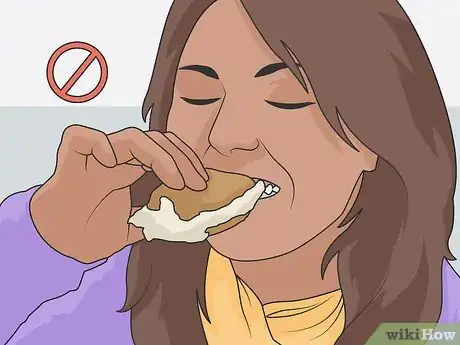

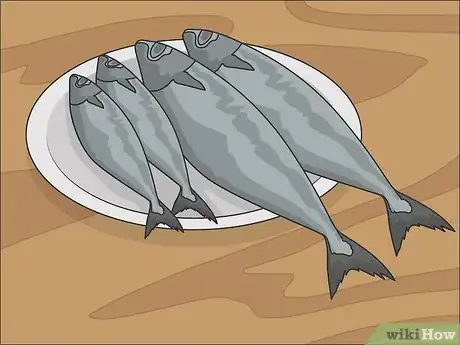

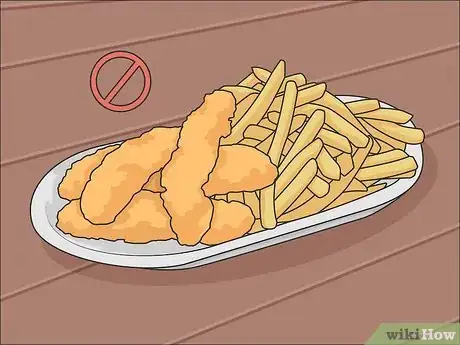
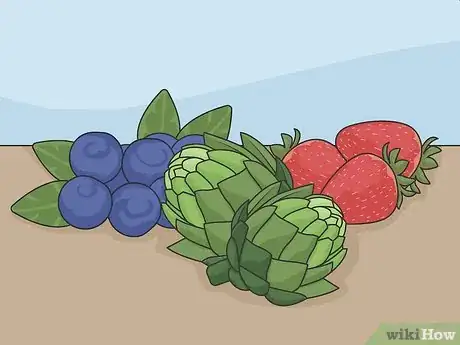

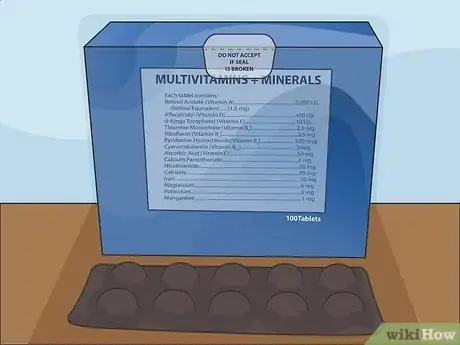
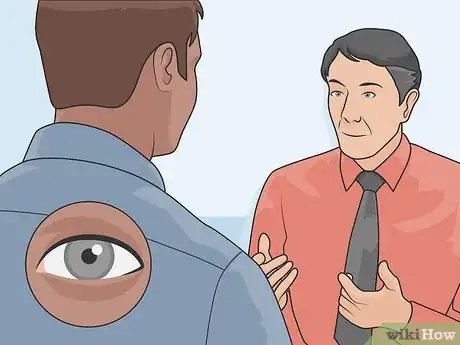
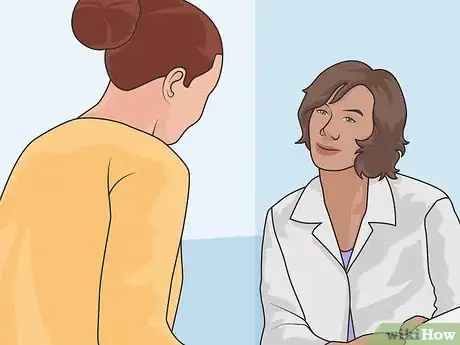
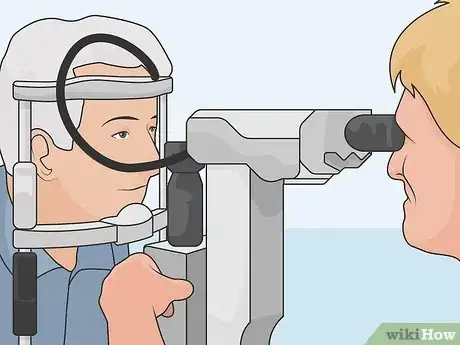
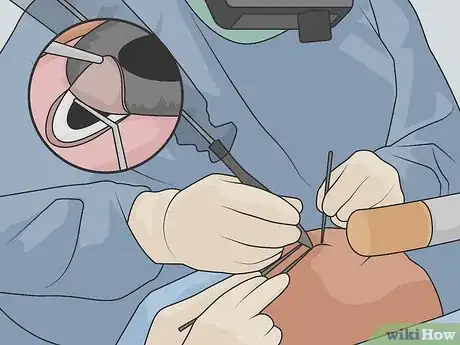
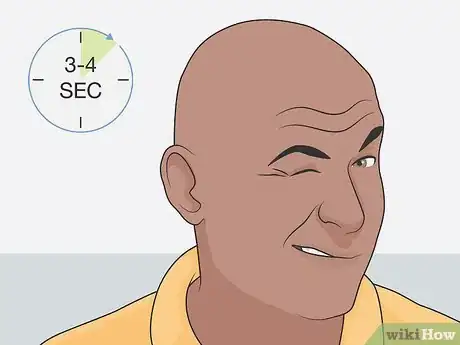
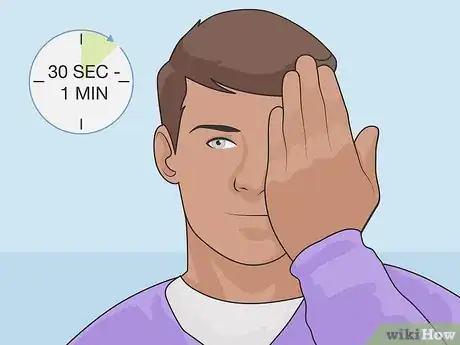
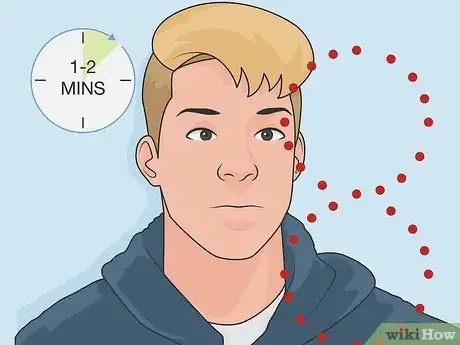
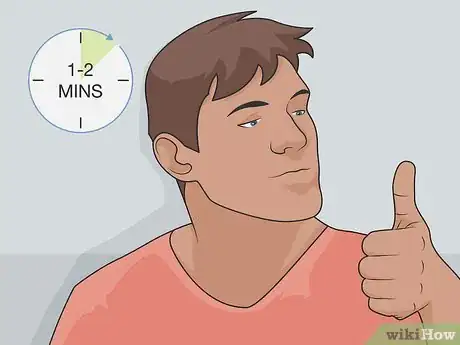
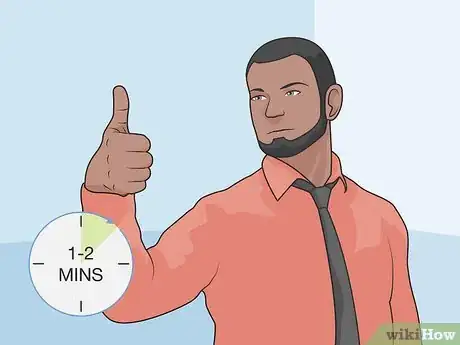
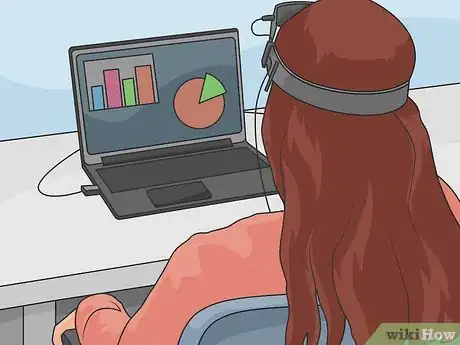
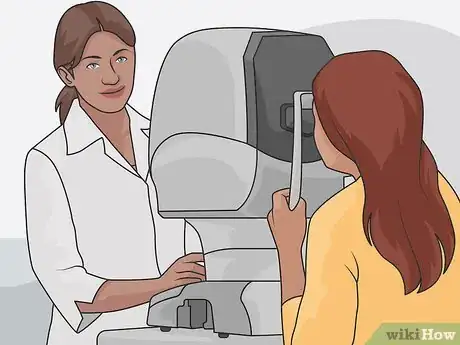
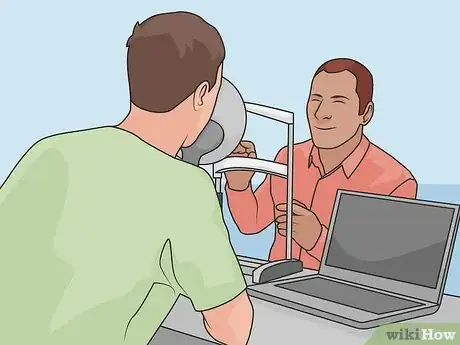

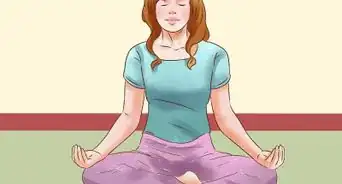



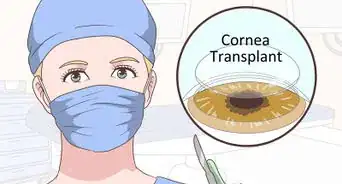
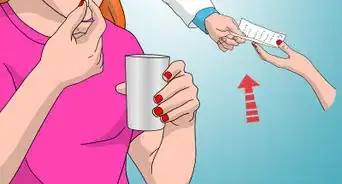



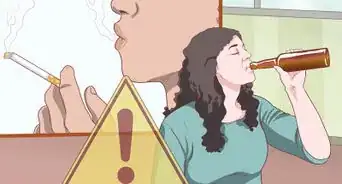


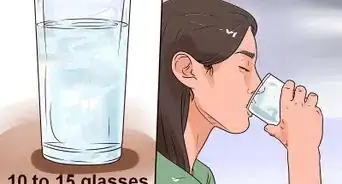














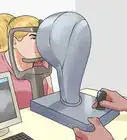



































Medical Disclaimer
The content of this article is not intended to be a substitute for professional medical advice, examination, diagnosis, or treatment. You should always contact your doctor or other qualified healthcare professional before starting, changing, or stopping any kind of health treatment.
Read More...